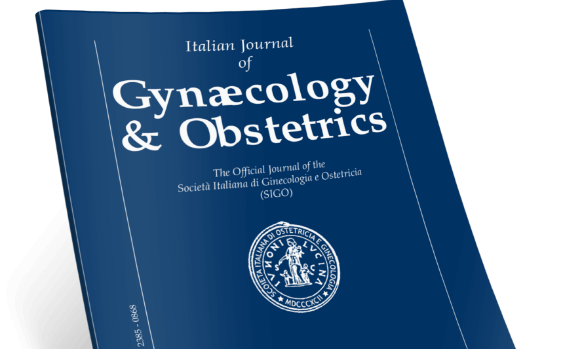Batool Mutar Mahdi
p.p. xx-xx
Hatav Ghasemi Tehrani, Somayeh Haghighat, Soheila Aghataheri
p.p. xx-xx
Xuan Trang Thi Pham, Anh Dinh Bao Vuong, Lan Ngoc Vuong, Phuc Nhon Nguyen
p.p. xx-xx
Zeinab Jalambadani
p.p. xx-xx
Andrea Fratta, Germana Nardini, Gabriele Saccone, Elisabetta Gragnano, Marta Quadrino, Maria Gabriella De Luca, Mariavittoria Locci
p.p. xx-xx
Hamideh Yazdi Moghaddam, Fatemeh Zahra Karimi, Elahe Jesmani, Mahbubeh Abdollahi
p.p. xx-xx
Anouar Jarraya, Manel Kammoun, Jed Hadjkacem, Yasmine Ellouze, Mohamed Derbel, Kais Chaabene, Kamel Kolsi
p.p. xx-xx
Dayang Corieza Febriany, Mohamed Arif Hameed Sultan, Zubair Ahmad Sharifuddin, Anand Raj Thangavelu, Cindy Chin
p.p. xx-xx
Yasmine Ellouze, Melek Jallouli, Ali Chaabouni, Marwa Abdelmoula, Mohamed Derbel, Kais Chaabene, Anouar Jarraya, Kamel Kolsi
p.p. xx-xx
Mohamed Ali Hassan, Gaser Elbishry, Mohamed Sweed, Radwa Ali
p.p. xx-xx
Antonio Maiorana, Giulia Zaccaria, Giovanni Parisi, Antonella Mercurio, Francesco Forlani
p.p. xx-xx
Hany F. Sallam, Nahla W. Shady, Ahmed A. Taha
p.p. xx-xx
Carlo De Cicco Nardone, Fernando Ficarola, Laura Feole, Cristiana De Luca, Francesco Plotti, Roberto Montera, Daniela Luvero, Giovanni Larciprete, Roberto Marci, Roberto Angioli, Corrado Terranova
p.p. xx-xx
Ahmed Elmaasrawy, Amr Abd-Almohsen Alnemr, Mariem A. Elfeky, Ola A. Harb, Abdel-Razik Elsayed Abdel-Razik
p.p. xx-xx
Sara Mari, Mario Polichetti, Maria Antonietta Castaldi, Virginia Gargano, Elisabetta Gragnano, Gabriele Saccone, Mariavittoria Locci, Antonio Mollo
p.p. xx-xx
Giancarlo Paradisi, Laura Anelli, Francesco Barletta, Francesco Antonino Battaglia, Michelangelo Boninfante, Marco Bonito, Roberto Brunelli, Franco Carboni, Brigida Carducci, Annafranca Cavaliere, Mario Ciampelli, Giulio De Matteis, Davide De Vita, Michele Desiato, Antonio Di Cioccio, Romolo Di Iorio, Sergio Ferrazzani, Alessandro Lena, Francesca Lippa, Patrizia Magliocchetti, Francesco Maneschi, Marina Marceca, Emanuela Marinoni, Roberto Marzilli, Valerio Napolitano, Giorgio Nicolanti, Mino Oliva, Pierluigi Palazzetti, Carlo Piscicelli, Antonio Ragusa, Pietro Saccucci, Giovanna Salerno, Giovanbattista Serra, Fabrizio Signore, Vincenzo Spina, Herbert Valensise, Antonio Lanzone
p.p. xx-xx
Somayeh Pourhosein, Zeinab Jalambadani
p.p. xx-xx
Noor S. Essa, Ban H. Hameed
p.p. xx-xx
Maged Elmohamady, Ehab Salama, Ahmed Okasha
p.p. xx-xx
Asha Vamadevan Nair, Maryam Nasser Al Shukri, Abla Al Manji, Taqwa Al Ruqhishi, Vaidyanathan Gowri
p.p. xx-xx
Dana Tayzhanova, Zhansaya Rustembekkyzy, Eduard Komlichenko, Olga Ponamaryova, Symbat Zhanabayeva
p.p. xx-xx
Neda Akhoundi, Zahra Naseri, Alireza Siami, Kobra Hazara, Sara Hazara
p.p. xx-xx
Sukanya Patra, Apoorva Dave, Rahul Manchanda, Luca Lukacs, Péter Török
p.p. xx-xx
Mohamed Elmahdy, Duaa El-Shahat, Madline Ezzat, Hand Haggag, Nehal Adel
p.p. xx-xx
Suzan Elsharkawy, Mohamed Hussein Khalil, Wael Samir Elgazayerli
p.p. xx-xx
Ahmed Elmaasrawy, Mohammed Barakat, Mohamed A. Wasfy, Mohamed Negm, Mohamed Mahmoud Almeniawy, Loay M. Gertallah, Mariem A Elfeky, Ola A. Harb, Mai Mostafa Zaitoun
p.p. xx-xx
Wisam Akram, Wassan Nori, Muna Abdul Ghani Zghair
p.p. xx-xx
Andrea Dagelic, Andrea Etrusco, Antonio D’Amato, Vito Chiantera, Indira Kosović, Klaudio Pjer Milunović, Mislav Mikuš, Jelena Marušić
p.p. xx-xx
Mohamed M. Hosni, Siham Imessaoudene, Hend Gabr, Hassan Morsi
p.p. xx-xx
Laura Pivazyan, Lilia Obosyan, Alina Grdzelishvili, Polina Matveeva, Julietta Avetisyan, Ara Unanyan, Anatoly Ishchenko
p.p. xx-xx
Alessandro Libretti, Anthony Nicosia, Libera Troìa, Valentino Remorgida
p.p. xx-xx
Nahla W. Shady, Ahmed A. Taha, Hany F. Sallam
p.p. xx-xx
Federica Savasta, Alessandro Libretti, Alberto Catinella, Antonio Taveggia, Libera Troìa, Valentino Remorgida
p.p. xx-xx
Felice Sorrentino, Lorenzo Vasciaveo, Francesca Greco, Maria Grazia Morena, Guglielmo Stabile, Francesco De Seta, Stefano Restaino, Antonio Simone Laganà,Luigi Nappi
p.p. xx-xx
Laura Pivazyan, Julietta Avetisyan, Sapiyat Isaeva, Lilia Obosyan, Ara Unanyan, Anatoliy Ishchenko
p.p. xx-xx
Gloriya Grifth Manuel, Jesteena John, Afra M.A
p.p. xx-xx
Alessandro Serva, Annalisa Tiberi, Patrizia Palermo, Angela D’Alfonso, Manuela Ludovisi, Giulia Del Rosario, Nicoletta Di Stefano, Donatella Serva, Achille De Dominicis, Maurizio Guido, Leonardo Matteo Di Stefano
p.p. xx-xx
Valeria Ghisu, Marta Gargiulo, Stefania Sanna, Agnese Maria Chiara Rapisarda, Clara Gerosa, Roberta Murru, Sabrina Rita Giglio, Stefano Angioni
p.p. xx-xx
Sally S. ELTawab, Ayat S. Hamed, Tawfik A. S. Tawfik, Rehab E. S. Nour El Din
p.p. xx-xx
Tamer Elnahas, Mazen Abdel Rasheed, Mohamed Nasr, Eman A. Hassan, Ehab Salama
p.p. xx-xx
Soha Albeitawi, Saba Alsmadi, Jehad Feras AlSamhori, Mu'taz Hanandeh, Majed Namarneh, Aysheh Ali Alshorman, Yara Q Aljarrah, Yazan AbuHaq, Dania Darwish
p.p. xx-xx
Tullio Golia D’Augè, Ilaria Cuccu, Andrea Etrusco, Antonio D’Amato, Antonio Simone Laganà, Ottavia D’Oria, Giorgio Bogani, Violante Di Donato, Ludovico Muzii, Andrea Giannini
p.p. xx-xx
Nicholas Adrianto, Ghea Mangkuliguna, Alfian Prasetyo, Candra Novi Ricardo Sibarani
p.p. xx-xx
Ismaiel Abu Mahfouz, Mallak Alshebailat, Lana Alderbashi, Lana Eneizat, Lujeen Arabiat, Marah Al-Mahameed
p.p. xx-xx
Raz Faraidoon, Suhailah M. Ali
p.p. xx-xx
Vincenzo Spina, Pietro Cignini, Francesco Bisogni, Cristina Fabiani, Michele Carlo Schiavi, Debora Grilli, Lorenzo Campanella, Andrea Etrusco, Rocco Rago, Pierluigi Palazzetti
p.p. xx-xx
Nafeesa Shahla, Nandakumar, Drithiman Shetty KM, Sharad Chand, Chaitrashree, Reshma Kolar
p.p. xx-xx













